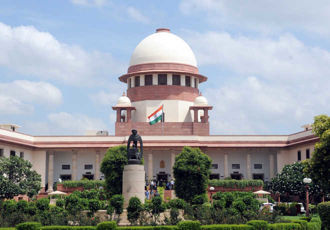
Vinod Behl
The euphoria generated by the DDA’s approval to the much awaited Land Pooling Policy under Delhi Master Plan 2021, on September 7, 2018, may well be misplaced, especially for the retail home buyers, considering that it is still a long road before the policy gets notified and finally comes in operation. Doubts have also been expressed over its efficacy in meeting its stated objective of providing affordable housing to masses in the Capital.
Ever since land pooling was unveiled in 2013 thousands of home buyers have burnt their fingers by investing hundreds of crores in unapproved projects, and it will not be surprising to see more gullible buyers getting trapped following all the hype created after the approval to the policy by DDA now.
On its part, DDA has been cautioning unsuspecting prospective home buyers against investing in housing projects under land pooling before these get licenses. Even in 2014-15, DDA had issued ads, warning home buyers to stay away from such projects. But the damage had already been done by then as a large number of people had already invested in the projects that had been marketed and sold as DDA-approved under the land pooling policy. Many of these projects did not even have land in place, leave aside any approvals. Most of these projects were in the form of Cooperative Housing Societies and those who have invested in these may also not have any legal protection as buyers.
Now, that DDA has approved the land-pooling policy, unscrupulous players will be out once again, to cash in on this ‘golden opportunity’. There is a fresh danger for the prospective home buyers as under the approved policy, many of these projects may not be financially viable. As Ramesh Menon, Director, Certes Realty and expert on land pooling puts it, “Many of these projects may not be completed or delivered at the price point of Rs 3,000- 4,000 per sq ft on which they were booked. Especially as at that time the number of units and pricing had been calculated on the basis of 400 FAR whereas under the approved policy, FAR has been reduced to 200”. This may hit the affordability of the 17 lakh housing units promised under this policy as the price may now work out to be over Rs 6,000 per sq ft.
It was earlier considered that due to affordability, land pooling would adversely hit residential real estate in NCR towns of Gurugram and Noida. But that may not be the case now. As Rattan Hawelia, Founder & Chairman, Hawelia Group that has projects in Noida says, “ The basic land price in Delhi will always be high in comparison to Noida, which may dampen the demand to cater to the affordable and lower mid-segment group housing needs. Noida is mainly an end-user driven area due to remarkable infrastructure and facilities development with great connectivity. At a time when ready-to-move-in or nearing possession properties are available at pocket-friendly prices at prime locations in this region, it will be very tough for a home buyer or end user to wait for a property that may command a premium for being a part of the Capital with infrastructure development”.
Doubts are also being expressed over the efficacy of the policy that has given the responsibility of land pooling and development to developer entities/consortiums, leaving DDA as a mere facilitator and planner. Neh Srivastava, Under Secretary, Ministry of Home Affairs and President, Central Secretariat Services Officers Society, says, “The concept of consortium will give undue power and advantage to big builders and stakeholders, leading to marginalisation of small land owners or farmers who were supposed to be real beneficiaries”. Ramesh Menon adds that land owners may well be apprehensive about dealing with private developer entities.
CREDAI NCR President, Pankaj Bajaj, too, has expressed doubts about the effective implementation of this policy with regard to infra development with trunk services like outer sector roads, drainage and sewerage etc as it may be difficult to acquire land for trunk services under the current land acquisition Act and provide services in a time-bound manner. Newly developed sectors in Gurugram are already facing this problem. Srivastava says that the criteria of necessitating 70 per cent land to be contiguous, will pose another hurdle.
After the DDA nod, Union Housing Ministry has to give its approval. Then the DDA has to put operational mechanism in place. “Then there is the important issue of when and how people will surrender the land and in the process legal issues may also crop up”, says Menon. And the whole process may take about one-and-a-half year. And while for land and financial investors, this throws up a multi-billion opportunity, home buyers need to wait to reap the benefits till the policy gets operational.
— The writer is founder, Ground Real(i)ty Media
Fact sheet
- Delhi to get 17 lakh houses under the policy covering urbanisable areas of urban extension in 95 villages. There will be over 5 lakh houses for EWS.
- Land owners having a minimum of 2 hectare land will be eligible. The land owner will not be required to transfer the title deed to DDA.
- Land owners pooling up to 20 hectares of land will get back 48 per cent of their developed land. Those pooling over 20 hectares, will get 60 per cent of their developed land back.
- FAR cut from 400 to 200 to make land pooling economically viable.
- 15 per cent FAR over and above permissible FAR allowed for EWS/affordable housing.
- Land pooling and development process will be undertaken by developer entities or consortiums and DDA will be a mere facilitator and planner.
- Integrated sector-based planning approach, with each sector comprising 250-300 hectares. Sector shall be eligible for development only when minimum 70 per cent contiguous land of the developed area within a sector is assembled free of encumbrances .
- Differential land return replaced with uniform division of land on 60:40 basis to benefit small land holders/farmers.


























